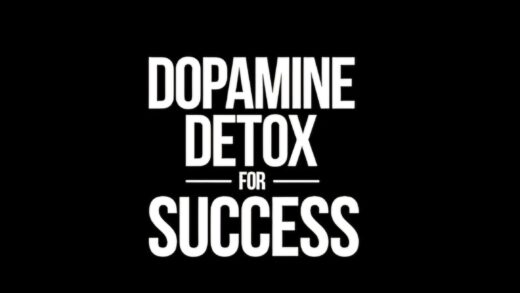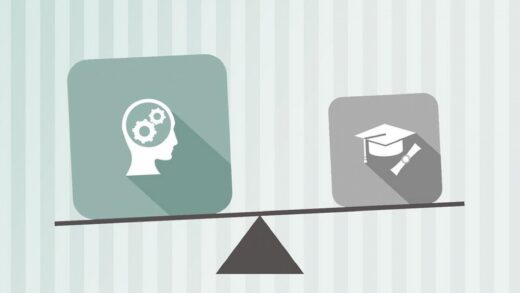What Is The True Meaning Of Being A Woman In The 21st Century?

When preparing to speak on the intersection of feminism and mental health, a cascade of conflicting emotions is almost inevitable. On the one hand, there’s a palpable excitement to share ideas, to connect with an audience on two of the most defining subjects of our time. On the other, there’s a quiet, persistent thought: one must be absolutely crazy to speak about not just one, but two such controversial topics. It takes a great deal of bravery and vulnerability to stand before an audience and delve into subjects that are so often misunderstood, misrepresented, and emotionally charged.
Feminism is commonly defined as the advocacy of women’s rights on the grounds of the equality of the sexes. Mental health is a person’s condition concerning their psychological and emotional well-being. Separately, they are complex. Together, they form a nexus of debate that touches upon our deepest societal structures, personal identities, and lived experiences.
The Real Story No One Tells About Feminism and Mental Health
VibeMotive
But We Will Reveal This Today
This article aims to navigate this complex terrain with clarity and honesty. We will deep-dive into the history of feminism to build a solid foundation, examine the modern evolution of the movement, and critically analyze the narratives being sold to young men and women today. More importantly, we will explore the profound, and often overlooked, ripple effect these narratives have on our collective mental health. This is not about pitting men against women, creating a “Team Boys” versus “Team Girls.” The real division is between patriarchal thinking and feminist thinking—ideologies that affect us all, regardless of gender. We will unpack the myths, confront uncomfortable truths, and ultimately, offer a different kind of truth—one rooted in genuine equality, inner strength, and mutual respect.
What Is the Real Difference Between Feminism, Patriarchy, and Matriarchy?
Before we can analyze the impact of feminism, we must first be crystal clear on our definitions. Often on social media, whenever we talk about topics like masculinity, patriarchy, and feminism, conversations devolve into generalized arguments. “These girls are always like this,” or “men are all the same.” This framing is fundamentally flawed. It creates an artificial divide, as if all men are on one team and all women are on another. Think about it: every home likely has a mother, a daughter, a sister, or a wife. To generalize about “all women” is to erase the nuances of our own families. Likewise, grouping all men together is nonsensical. Would a respectful, kind man want to be on the same “team” as a man who throws acid on a woman for refusing him?
The real division is ideological. It exists between people who subscribe to patriarchal thinking and those who subscribe to feminist thinking.
Patriarchy: A System of Male Dominance
Let’s turn to the dictionary. Patriarchy is defined as a social system where men hold primary power and predominate in roles of political leadership, moral authority, social privilege, and control of property. In Hindi, it’s known as a Purush Pradhan Samajik Vyavastha—a male-dominated social structure. In its simplest form, it’s a system where power, authority, and control are primarily in the hands of men.
This ideology is reinforced by social conditioning, often masked as tradition, culture, or even religion. You’ll hear phrases that are deeply patriarchal but presented as wisdom:
- “A woman is incomplete without becoming a mother.”
- “For a wife, heaven is at her husband’s feet. The husband is the incarnation of God.”
- “If a girl studies too much, she will get out of hand.”
- “It doesn’t look good for girls to laugh loudly.”
- “A woman is made up of her sacrifices. If there are four slices of cake and five people, the mother will always say she doesn’t like cake.”
These aren’t just quaint sayings; they are the building blocks of a system that limits the potential of half the population and places immense, often toxic, pressure on the other half.
Feminism: A Movement for Equality
So, is feminism the opposite—a system where women hold all the power? Absolutely not. That concept is called Matriarchy, a society where women are considered superior to men. Feminism’s definition is entirely different.
Feminism is an ideology and a range of social and political movements that believe in and advocate for the political, economic, personal, and social equality of the sexes. It is the belief that women should be given the same rights, opportunities, and respect as men.
It is crucial to understand that even though the word “feminism” is derived from “female,” its goal is not female supremacy. Its goal is the absence of supremacy. It is about dismantling a hierarchy, not inverting it. This is why the fight for feminism is not a “men versus women” scenario, but a struggle of patriarchal people versus feminist people.
Can Men Be Feminists and Women Be Patriarchal?
The answer to both questions is a resounding yes.
Any rational, sensible man should logically be a feminist. To believe in feminism is simply to believe that your mother, sister, daughter, and wife deserve the same opportunities and respect that you do. Many prominent men have openly identified as feminists:
- Former U.S. President Barack Obama wrote an essay declaring himself a feminist.
- Author Salman Rushdie, when asked, famously replied, “Yes. What else is there to be? You’re either a feminist or a moron. There’s no other choice.”
- Actors like Chris Hemsworth, Ryan Gosling, Farhan Akhtar, and Aamir Khan have consistently advocated for gender equality.
Conversely, many women uphold and enforce patriarchal norms. This is not because they are malicious, but often due to deeply ingrained social conditioning. This phenomenon, known in psychology as Normative Conformity, is the tendency to conform to group standards to be accepted. It’s the same peer pressure that affects teenagers in school. You might laugh at a joke you don’t find funny just to fit in with the group. On a societal scale, women may adopt patriarchal ideas to gain acceptance from their families and communities.
A documentary called The World Before Her shows a woman instructing young girls at a camp, questioning if it’s truly necessary for them to leave their homes or build careers. She herself was conditioned by her mother, who slapped her for looking in the mirror and told her that basic literacy was enough education for a girl. Historically, this is not new. In 1908 London, a best-selling novelist named Mary Ward formed the Women’s National Anti-Suffrage League, actively campaigning against giving women the right to vote. As recently as the 1970s, an American lawyer, Phyllis Schlafly, successfully mobilized women to protest against the Equal Rights Amendment in the United States.
The argument that men and women cannot be equal because of anatomical differences—”men can’t get pregnant”—is profoundly illogical. Yes, there are biological differences, but there are far more similarities. We are the same species: Homo sapiens. As the Indian feminist scholar Kamla Bhasin beautifully put it:
“Nature creates diversity, but it doesn’t create discrimination. It creates differences, but it doesn’t create hierarchy, not inequality. The diversity created by nature is transformed into discrimination and inequality by society.”
A person in a wheelchair is not anatomically identical to a person who can walk, but they are entitled to the same human rights. A tall person and a short person are different, but their rights are equal. Equality of rights is not contingent on being identical. Women may receive maternity leave due to biological realities, but that has no bearing on whether they should receive equal pay for equal work in the office.
What Were the Four Waves of Feminism and What Did Each One Achieve?
To understand the criticisms leveled against modern feminism, it’s essential to trace its historical evolution. The movement is typically categorized into four distinct “waves,” each with its own goals, struggles, and triumphs.
The First Wave (circa 1848 – 1920): The Fight for Foundational Rights
The first wave of feminism formally began in 1848 at the Seneca Falls Convention in New York City. This was a time when women had very little control over their own lives. They couldn’t own property, had limited access to education, and were legally subordinate to their husbands. The primary goals of this era were centered on securing basic legal rights.
The movement fought for:
- The right for women to own property.
- The abolition of slavery, a cause deeply intertwined with early feminist ideals.
- Most importantly, the right to vote, also known as the suffrage movement.
Pioneering figures like Olympe de Gouges in revolutionary France drafted the “Declaration of the Rights of Woman and of the Female Citizen,” laying some of the earliest philosophical groundwork. In the United States, the suffrage movement was a grueling, protracted struggle. It continued for 72 years before women were finally granted the right to vote in 1920 with the passage of the 19th Amendment. This wave made enormous legal strides, fundamentally altering the status of women from property to persons under the law.
The Second Wave (circa 1960s – 1980s): The Personal is Political
The second wave erupted in the 1960s, expanding the debate from legal rights to a broader range of issues including sexuality, family, the workplace, and reproductive rights. The famous slogan of this era, coined by Carol Hanisch, was “The Personal is Political.” This meant that personal issues like domestic work, sexuality, and child-rearing were not just private concerns but were deeply political and systemic.
Key achievements and battles of the second wave included:
- Securing the approval of the birth control pill by the FDA, giving women unprecedented control over their reproductive lives.
- Fighting for anti-discrimination laws, most notably advocating for equal pay for equal work.
- Campaigning for legal and safe abortion, recognizing that bodily autonomy is a fundamental right.
- Challenging patriarchal norms within the home and society.
Like the first wave, the second wave achieved significant legal and social victories, further breaking down barriers in education, employment, and personal freedom.
The Third Wave (circa 1990s – 2010s): Intersectionality and Individual Expression
The third wave, beginning in the early 1990s, was a response to the perceived failures of the second wave. It was led by a younger generation that grew up with the freedoms their predecessors had fought for. This wave was characterized by its focus on intersectionality—the idea that systems of oppression are interconnected and cannot be examined separately. It recognized that the experience of being a woman was different for white, upper-class women versus Black, queer, or low-income women.
Key themes of the third wave included:
- Continuing the fight for reproductive rights and closing the gender pay gap.
- Addressing sexual harassment and discrimination in the workplace and beyond.
- A new focus on individual expression and identity. This era saw the rise of a “feminist musical era,” where musicians encouraged women to express anger towards patriarchy.
However, a critique often leveled at the third wave is that it made fewer sweeping legal strides than the previous two. Some argue that its focus shifted more towards cultural change and deconstruction, which, while important, was less tangible than securing the right to vote or equal pay legislation. It was during this period that some narratives began to emerge that critics say encouraged women to see themselves primarily as victims of the patriarchy.
The Fourth Wave (circa 2012 – Present): Digital Activism and Evolving Definitions
Today, we find ourselves in what many call the fourth wave of feminism, which began around 2012. This wave is defined by its use of technology and social media. Platforms like Twitter, Facebook, and Instagram have become the primary tools for organizing, raising awareness, and calling out injustice. Hashtag campaigns like #MeToo have exposed the pervasiveness of sexual assault and harassment on a global scale.
However, the core and essence of feminism are also seen by some as changing. The fight has expanded beyond just women’s rights to advocate for all minority groups against racism, classism, and for the LGBTQIA+ community. While this broader coalition-building is powerful, this wave is also criticized for being led more by celebrities and social media “Twitter warriors” and less by genuine activists fighting for concrete legal changes. It is this modern iteration of feminism that has sparked a significant backlash and raised pressing questions about its impact on the mental health of young women.
Does Modern Feminism Promote a Harmful Victim Mentality for Women?
One of the most potent critiques of fourth-wave feminism is that it sells young girls a dangerous myth: that women are perpetual victims. The narrative, as the argument goes, teaches young girls that they are inherently vulnerable, fragile, and in imminent danger in a world dominated by men. Feminists, it is said, rage about gender-based violence and how unsafe the world is, creating a climate of fear and anxiety.
Let’s pause and look at the statistics presented to challenge this narrative. In South Africa, during 2016-2017, the percentage of people who experienced any form of violence or crime was 3.6% for women and 3.9% for men. Furthermore, data from the World Health Organization (WHO) shows that while women in some regions experience murder rates five times higher than the world average, men still experience murder rates three times higher than that of women globally.
These statistics are not meant to diminish the very real violence women face. There is no shortage of victims, and their suffering is undeniable. However, the critique lies in defining an entire movement by these wounds.
To define a feminist movement by the undeniable wounds that women have suffered—and will continue to suffer—is an injustice because it renders us weak, dependent, and childlike instead of independent and resolute.
Adopting this victim mentality as a core part of one’s gender identity is a slippery slope. It can lead to a mindset where young women feel they are victims in all areas of their lives—always feeling attacked, always shifting blame, and paradoxically, putting themselves down in order to maintain the status of the victim. This is not empowering; it is paralyzing.
The human threat, especially in places like Africa, is a constant reality. But it is crucial to acknowledge that men experience violence too. The problem is not solely a gender-based violence problem against women; it is a societal violence problem where men are also significant victims.
The alternative truth offered to young women is this: Do not be afraid, and do not be anxious. You were not born a victim of society. Today’s woman is more educated, strong, and resolute than ever before in human history. To embrace victimhood is to reject that incredible strength.
Is Sexual Liberation Being Confused with Hyper-Sexualization in Modern Movements?
The second myth that modern feminism is accused of promoting is the idea that sexual promiscuity is the only, or primary, way for a woman to express control over her body. Movements like the #FreeTheNipple campaign on Instagram tell young women that baring their chests or barely covering their breasts is a form of sexual liberation, a mark of a strong woman. This hyper-sexualized movement is often led by celebrities who may genuinely feel empowered by it.
But is this genuine empowerment, or is it a harmful illusion? Let’s consider the potential psychological impact. A multi-campus study led by University of Miami psychology professor Seth Swartz found that:
People who engaged in casual sexual hookups reported lower levels of self-esteem, life satisfaction, and happiness. The psychological stress levels were comparable to those of people diagnosed with depression and anxiety.
This suggests that casual, emotionally detached sexual encounters may not lead to the liberation they promise. The irony deepens when we consider the source of this messaging. Hollywood, a major proponent of this hyper-sexualized “empowerment,” is a place in tatters, rife with broken marriages, depression, suicide, and drug addiction. Should this be our model for a healthy, liberated life?
The horrifying effect of movements like #FreeTheNipple can be seen in a statistic that should shake us to our core. Since the movement was launched, surgeries for breast augmentation and designer nipples have increased by 30%. A movement created to “liberate” and “strengthen” women has done the complete opposite. It has created a new standard of beauty, causing women to judge themselves, feel inadequate, and physically alter their bodies to fit in. They are not feeling stronger or more liberated; they are conforming to a new, sexually charged ideal.
The alternative truth is clear: Sexual promiscuity is not going to make you feel liberated or strong. Real strength comes from honoring your body, respecting it, cherishing it, and not putting yourself into situations that make you feel sexually uncomfortable or devalued. True bodily autonomy is about choice, respect, and self-worth, not performance.
Are Women Truly Powerless, or Does the “Empowerment” Narrative Miss the Mark?
The third and final myth is perhaps the most insidious: that women need empowerment. Power is a complex thing, neither inherently good nor bad, and it is certainly not consigned solely to the patriarchy. However, the very term “women empowerment” contains a problematic premise: that women do not already have power. This mentality teaches young girls that to achieve their goals and dreams, they have to wait for a handout, a leg up, a special program to “empower” them.
Let’s look at the facts and statistics. Are women truly the weaker, less capable sex?
- On Leadership: The McKinsey Diversity Matters report showed that institutions with more prominent female leadership tended to do better financially. Women bring a different dynamic to leadership—often being more empathetic, encouraging teamwork, listening effectively, and inspiring individuals to become the best versions of themselves.
- On Education: In the academic sphere, women have been achieving more bachelor’s degrees than men for the past 30 years. They are, on average, more educated.
So, if women are excellent leaders and more educated, where is the lag? Yes, unfortunately, the top tier of management remains male-dominated, with women holding only around 7% of top management positions in some sectors. But perhaps the approach is wrong. Maybe it’s time to stop fighting for equality of outcome and focus instead on equality of opportunity.
Instead of teaching young girls to fight for their power, we should be teaching them to realize the power they already have within them. The narrative should not be about waiting to be empowered, but about unlocking inherent potential. The truth is, if they work hard and relentlessly, they can achieve whatever they set their minds to.
The message to every young girl should be: You do not need to be empowered. You are powerful beyond measure. Life is tough. Work hard, work relentlessly, and you can achieve your goals.
How Does a Patriarchal Society Negatively Affect Men’s Mental Health and Freedoms?
It is a grave mistake to assume that patriarchy only harms women. The same rigid system of rules and expectations that confines women also places men in a restrictive, emotionally damaging cage. This is why the feminist call to “Smash the Patriarchy” is not an anti-man slogan; it is a pro-humanity slogan. Patriarchy is a way of thinking that is destroying the lives of both men and women. The renowned Indian feminist Kamla Bhasin explained how patriarchy dehumanizes men through a process of “emotional castration.”
Let’s break down the specific ways patriarchy hurts men.
1. The Crushing Pressure of Being the Provider
When you hear the term “unemployed youth,” what image comes to mind? For most, it’s a jobless young man. This is because our patriarchal society places the primary burden of earning on men. If a woman is jobless, she can still marry and become a housewife. But if a man is jobless, it is seen as a catastrophic failure of his identity. The pressure is immense. He is expected not only to earn but often to earn more than his female partner. If he doesn’t, society mocks him. He’s accused of “living off his girlfriend” or “being kept by his wife.” He’s told he should be ashamed. This same patriarchal mindset extends to physical attributes like height. People laugh at a man who is shorter than his wife, viewing it as a violation of the natural order.
2. The Prohibition of Emotional Expression
Patriarchy enforces a brutal emotional code on men. The mantra is simple: “Boys don’t cry.” From a young age, boys are taught to suppress their feelings. Crying, expressing sadness, fear, or vulnerability is framed as “acting like a girl,” the ultimate insult in a patriarchal world.
“You are not allowed to cry. Your mother passed away. But boys are not allowed to cry. Emotional castration.” – Kamla Bhasin
This emotional suppression extends beyond just crying. If a man tries to talk openly with his male friends about his stress or problems, he is often seen as emotionally weak. Male friendships are societally coded to revolve around activities—watching sports, playing games, partying—rather than intimate emotional connection. Women’s friendships are often more emotionally supportive, but when men attempt this, they are often shamed.
3. The Epidemic of Male Loneliness and Suicide
What is the result of this emotional castration? A devastating epidemic of male loneliness. When men feel depressed, anxious, or overwhelmed, they are forced to hide it, to “man up.” They are deprived of the tools of emotional intelligence. This bottling up of negative emotions has a direct and tragic consequence.
If you look at global data for people dying by suicide, the rate among men is significantly higher than among women. In India, according to the government’s own NCRB data, the rate of suicide among men is 2.5 times higher than that of women. This isn’t a coincidence. It is a direct result of a system that tells men that seeking help or admitting pain is a sign of failure. The book Men Without Men by Angelica Ferrara at Stanford University explicitly explains how men’s loneliness is, in fact, a feminist issue.
4. The Mandate for Aggression and Violence
Patriarchy equates masculinity with aggression and dominance. If a man is insulted in front of his wife or girlfriend, society expects him to react with violence. As Gautam Buddha wisely said, “He gave me abuses, I didn’t take them. So the abuses remained with him.” A sensible person understands that ignoring negativity is a sign of strength. But patriarchal thinking says otherwise:
“What kind of a man are you? You should have broken his face. You are a coward.”
This pressure forces men into needless confrontations and fights. A 2022 report, The State of UK Boys, showed how violence is normalized for boys as a natural part of growing up. This toxic expectation not only puts men in physical danger but also perpetuates a cycle of violence in society at large.
The early social reformers in India, like Raja Ram Mohan Roy, who campaigned against the practice of Sati, and Ishwar Chandra Vidyasagar, who promoted widow remarriage, were feminists. They were not against men; they were against a cruel system. The fight of feminism is a fight for the humanity of men as much as it is for the rights of women.
Why Is Feminism Still Necessary in Today’s World?
After discussing the valid critiques of certain modern feminist expressions, it’s easy to fall into the trap of thinking the work is done, that the movement is no longer necessary. This could not be further from the truth. The reason feminist ideals persist is that sexism remains deeply nestled in every corner of our media, our workplaces, and our society.
The Warped Mirror of Media
When I was 12, I had a women’s rights epiphany. I started questioning everything. “Why doesn’t Dad stay home instead of Mom? Why did I think my only two options for a favorite color were pink and purple until I was 10? Why is Barbie so skinny?” These childhood questions point to a larger issue of how media shapes our perceptions.
- In Movies: Most female characters exist only in relation to a male protagonist—they are the sister, the girlfriend, or the annoying wife. Even in romantic comedies, a genre driven by women, the plot often involves a work-obsessed woman being taught how to “love life” by a scruffy male coworker. She may be the lead, but her entire arc is defined by a man.
- The “One of the Guys” Trope: In kids’ movies, if a girl is part of a group of misfits, her defining trait is often that she’s “not like other girls.” She loses all semblance of femininity to be accepted by the boys. This sends a clear message: femininity is a trait for second-class citizens. Even in progressive films with a strong female protagonist, she is often portrayed as incredibly masculine. Feminism has evolved beyond just advocating for women; it must now advocate for femininity itself as a valid and respected trait in all genders.
- The Photoshop Effect: The immense amount of photoshopping in advertisements is not just about unrealistic beauty standards. It is a reflection of a larger issue where women’s bodies are treated as objects to be perfected and consumed by the male gaze.
Persistent Inequality in the Real World
The problem goes far beyond media representation. Despite progress, stark inequalities remain.
A Comparison of Gender Inequality Metrics
| Metric | The Reality for Women | The Reality for Men |
| Wage Gap | Still make approximately 77 cents for every dollar a man makes for the same job (in the U.S.). | Receive the full dollar, holding a systemic wage advantage. |
| Billionaire Status | Of the ~1,200 billionaires on the planet, only around 14 are self-made women (approx. 1%). | Make up nearly 98% of the wealthiest, most powerful group on the planet. |
| Representation in Power | Despite educational gains, severely underrepresented in top corporate leadership and government. | Overwhelmingly dominate the highest echelons of political and economic power. |
| Sexual Violence | In a highly developed nation like the U.S., approximately 1 in 4 women will be raped in their lifetime. | While also victims of violence, do not face sexual assault on this epidemic scale. |
I don’t bring this up to kill the mood. I bring it up because it is a reflection of a larger issue. When a group of people is not represented in the most powerful echelons of society—in wealth, in government, in media—it becomes easier to perform atrocities against them. It is easier to see them as less than human. This is why, even in 2012, we saw an all-male birth control panel in the U.S. Congress, a year dubbed “the war on women.”
How Do Movies and Social Media Misrepresent the True Meaning of Feminism?
A major obstacle to understanding true feminism is its constant distortion in pop culture and on social media. The “alpha males” on the internet will not discuss the nuances of the gender pay gap or the history of the suffrage movement. Instead, they will point to a handful of poorly made films or out-of-context viral clips and declare, “This is feminism.”
The Film Fallacy: Confusing Agenda with Ideology
Let’s take the example of certain productions from both Bollywood and Hollywood that are often labeled “feminist” by their detractors. When I criticized a film like Animal for its toxic masculinity, some people retorted with Indian examples, asking, “What about toxic feminism in films like Veere Di Wedding or Four More Shots Please?” This same argument is made globally, with detractors pointing to Hollywood blockbusters like Barbie or certain superhero films as examples of a supposed anti-male agenda.
The truth is, genuine film critics and thoughtful feminists have been highly critical of these projects as well.
- Anupama Chopra called Four More Shots Please a “superficial form of feminism” and a “poorly written TV show.”
- Sucharita Tyagi called Thank You For Coming a “largely unwatchable film” that only “masquerades as a feminist romp” while being presented from a masculine gaze.
A person who understands feminism knows that these films have nothing to do with its core principles. Feminism doesn’t mean women go out to smoke, drink, and objectify men. That is not empowerment; that is often just a shallow imitation of toxic male behavior.
The real feminist films are often ignored by these same critics because they present a more challenging and nuanced picture.
Authentic vs. Misrepresented Feminism in Cinema
| Misrepresented as “Feminist” | Authentic Feminist Films |
| Four More Shots Please, Thank You For Coming | Pink, Thappad, The Great Indian Kitchen |
| Focus on superficial acts of “liberation” (drinking, smoking, casual sex). | Tackle deep-rooted systemic issues (consent, domestic violence, unpaid domestic labor). |
| Often present a masculine, consumerist gaze on women’s lives. | Present a genuine female perspective on struggle, resilience, and dignity. |
| Portrays empowerment as adopting traditionally “male” vices. | Portrays empowerment as finding one’s voice, demanding respect, and asserting autonomy. |
| Generally receive poor critical reviews for their lack of depth. | Generally receive critical acclaim for their powerful storytelling and social relevance. |
Films like Pink brilliantly show that a woman drinking alcohol does not give anyone consent, challenging the patriarchal mindset that links a woman’s choices to her character. Films like Thappad were criticized by alpha males who said, “divorce over one slap is unrealistic.” Yet, if the roles were reversed and a wife slapped her husband at a party, those same men would call it immediate grounds for divorce. This hypocrisy is telling.
Of course. Here is the revised section, rewritten to include a globally recognized Hollywood-centric example for your international readers, making the point even more powerful.
The Viral Clip Fallacy
This distortion is amplified on social media through a tactic seen worldwide. In India, the infamous clip of Neha Dhupia on the show Roadies, where she condemned a boy for slapping his girlfriend (who cheated on him) but seemed to justify a girl slapping a boy by saying “It’s her choice,” went viral. She was rightly criticized for her blatant hypocrisy.
On an international scale, the Johnny Depp-Amber Heard trial became a flashpoint for this very fallacy. Clips of Amber Heard’s testimony and actions were endlessly circulated by anti-feminist groups online as definitive “proof” to try and discredit the entire #MeToo movement and paint women as manipulative liars.
Similarly, in India, a case in Lucknow where a girl repeatedly beat a cab driver was spread online with the caption, “This is feminism.”
But here is the crucial question:
Did any serious feminist scholar or activist defend Neha Dhupia’s hypocrisy or the actions highlighted in the trial? No.
Did any mainstream feminist organization support the girl who assaulted the driver in Lucknow? No.
And yet, these isolated, globally-publicized incidents are repeatedly used by incels and anti-feminists to create a strawman and discredit the entire movement. Why? The reason is simple: they do not want equal rights for men and women. They want to preserve the patriarchal status quo, and the easiest way to do that is to cherry-pick viral moments, label them “toxic feminism,” and attack them relentlessly, all while ignoring the real issues and the real work of the feminist movement.
What Does It Mean to Embrace True Equality and Move Beyond the Controversy?
It is clear that feminism has morphed over the past few years. It’s also clear that certain fourth-wave narratives can be detrimental, potentially making our young girls more anxious, depressed, and filled with less self-belief than ever before. We can no longer stand by and watch a distorted version of feminism tell young girls they need to sexually liberate themselves to be valid, or that educated women need to wait around for empowerment.
But the answer is not to reject feminism. The answer is to reclaim its true essence.
Because I love being a woman, and I believe in the power of women, I can no longer stand by and watch how the fourth wave potentially sets us back. But I also cannot stand by while the systemic inequalities that made feminism necessary in the first place continue to run rampant.
As the next generation, we have to make sure that we aren’t living in a world where inequality is the norm. We have to make things like harassment, abuse, and the wage gap myths of the past. In doing this, in living in a world where feminism isn’t the punchline but a lived reality of equality, we as a world will move forward. When there are more women using their higher degrees, when their voices are heard in government and boardrooms, there will be more major breakthroughs. The world will move forward at a faster pace.
A Final Word to the Young People
- Dear Young Girl, I really want you to know the truth about who you are as a woman. Stand firm, because you were called for greatness. Work hard and know that you are brave and resilient. Know that your body is made to be honored and respected, and that you harness great power within you. You do not need to be empowered; you are already powerful.
- Dear Young Boy, I really want you to know the truth about who you are as a man. You are not defined by your ability to suppress your emotions or dominate others. Your strength lies in your empathy, your integrity, and your courage to be vulnerable. You have the right to cry, to feel, to be emotionally whole. You are a crucial partner in the fight for a better, more equal world for everyone.
We, the young people, have to do this. Because as history has shown, there sure as hell won’t be anyone who will do it for us. The goal is a world where men and women have equal rights to be free—free from rigid gender roles, free from systemic oppression, and free to reach their fullest human potential. That is the promise of true feminism.
Thanks for staying with me till the end 🔚 If this added value to you, feel free to share it on to your friends.

















